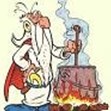Jeff Cooper: "S&P Falls Below a Key Level"
1 Mensagem
|Página 1 de 1
Jeff Cooper: "S&P Falls Below a Key Level"
"S&P Falls Below a Key Level"
By Jeff Cooper
Street Insight Contributor
10/11/2004 7:37 AM EDT
"In the last commentary, we stated that it would not be unusual for the S&P 500 to pull back to its recent breakout point of 1130/1131. I went on to say that trade more than 3 points below the breakout, or trade below 1128, would be a warning flag, while trade below our old friend 1123 would confirm that something was wrong.
On Friday, after a first-hour high, 1128 was broken in an Opening Range Breakdown (ORB). The ORB below 1128 set the tone for a trend day down and a test of 1123.
On the important weekly close, the S&P closed below 1123 -- at 1122.15. This puts us in a defensive posture, as it opens up the distinct possibility that the turn-up in the quarterly chart defined a high and that we had another false breakout.
Although, as I have said, it is not unusual to see a knee-jerk reaction after the monthly or quarterly swing charts turn, Thursday's and Friday's sharp selloff mark a sharp angle of attack down and look like more than just normal profit-taking. Furthermore, I do not like a market that closes significantly back below a breakdown point -- particularly on a weekly basis.
Another cause for concern is the symmetry in the S&P and the Nasdaq. Both delivered Real Distribution Days (RDDs) -- the former on Thursday, while the Nazz registered an RDD on Friday.
After poking its head above its 200-day moving average, the Nazz did a pratfall. Importantly, this week's banana peel in the market occurred at the end of the first week of October -- a time period that we have pointed to as, cyclically, the last zone for a bearish pivot in this time frame.
Technically, the intermediate bull argument took some direct hits this week:
The inability of the S&P to fulfill a measured move count to 1170 looks like a failure. Sharp reversals characterize such failures.
The S&P closed back below its recent breakout point of 1130/1131.
The S&P closed back below our 1123 pivot.
The S&P and Nazz each scored RDDs this week after just scoring RDDs a week ago Friday on the first day of October.
As the weekly chart of the S&P below shows, the week ending Sept. 24 was an outside week down, which, bullishly, was reversed the next week, the week ending Oct. 1, with an outside week up. That should have generated substantial follow-through.
But this week tailed off as the indices gave up all their gains and then some. Consequently, trade this week below Friday's low, which will be easy to accomplish, would set up a slingshot down on the weekly chart, which on the S&P will be confirmed by a break of the low of the first week of October at 1101.30. This would trace out a reversal of a reversal of a reversal on the weekly chart and carve out an outside down month on the S&P. It is my impression that such an outside down month, in October, from three higher lows on the weekly chart, will likely generate a break of the August lows.
Now, we know the importance of the last swing low on the S&P at 1101: From Wednesday's high of 1142 to the Aug. 13 low of 1060 is a range of 82 points. Half that range, or 41 points added to 1060, yields 1101, proving the geometry of Wednesday's high at 1142. That's another reason why the sharp angle of attack down from this level must be respected.
Conclusion: Further downside follow-through this week below 1115.95 on the S&P and 1908.56 on the Nazz will offset their respective Real Accumulation Days of Oct. 1, and put in an outside down month on both indices.
It is my impression that such action will put the market on the ropes and set up an October plunge below 1060 prior to the election. However, if such a selloff below 1060 should occur, it does not change the big-picture bullish pennant. As W.D. Gann said, "Generally, campaigns are traced out in three swings, but occasionally a fourth swing develops."
What caused the plug to be pulled on Thursday and Friday? Was it oil closing at 53.30? Was it Friday's disappointing jobs number? Was it profit-taking in front of the debate on Friday night? I think that the real culprit, as I hinted recently, is that on the first day of October, big index buy programs were launched in order to set up a liquidation of stocks bought in the third quarter. If so, once money managers get a whiff that they have been hoodwinked, a serious selloff can unfold as they attempt to protect their performance.
P.S. Friday, I stated that 44 of the Octobers from 1941 were up. In fact, 37 of the 63 Octobers since 1941 were up, for a 60% win record -- the mean gain being better than the mean loss. Additionally, nine of the 13 election-year Octobers were up, for a 70% win record. However, trade and follow-through below 1101 S&P suggests that this October will be down. When the market does not do what these statistics suggest, sometimes it does not do so in a very big way. "
(in www.realmoney.com)
By Jeff Cooper
Street Insight Contributor
10/11/2004 7:37 AM EDT
"In the last commentary, we stated that it would not be unusual for the S&P 500 to pull back to its recent breakout point of 1130/1131. I went on to say that trade more than 3 points below the breakout, or trade below 1128, would be a warning flag, while trade below our old friend 1123 would confirm that something was wrong.
On Friday, after a first-hour high, 1128 was broken in an Opening Range Breakdown (ORB). The ORB below 1128 set the tone for a trend day down and a test of 1123.
On the important weekly close, the S&P closed below 1123 -- at 1122.15. This puts us in a defensive posture, as it opens up the distinct possibility that the turn-up in the quarterly chart defined a high and that we had another false breakout.
Although, as I have said, it is not unusual to see a knee-jerk reaction after the monthly or quarterly swing charts turn, Thursday's and Friday's sharp selloff mark a sharp angle of attack down and look like more than just normal profit-taking. Furthermore, I do not like a market that closes significantly back below a breakdown point -- particularly on a weekly basis.
Another cause for concern is the symmetry in the S&P and the Nasdaq. Both delivered Real Distribution Days (RDDs) -- the former on Thursday, while the Nazz registered an RDD on Friday.
After poking its head above its 200-day moving average, the Nazz did a pratfall. Importantly, this week's banana peel in the market occurred at the end of the first week of October -- a time period that we have pointed to as, cyclically, the last zone for a bearish pivot in this time frame.
Technically, the intermediate bull argument took some direct hits this week:
The inability of the S&P to fulfill a measured move count to 1170 looks like a failure. Sharp reversals characterize such failures.
The S&P closed back below its recent breakout point of 1130/1131.
The S&P closed back below our 1123 pivot.
The S&P and Nazz each scored RDDs this week after just scoring RDDs a week ago Friday on the first day of October.
As the weekly chart of the S&P below shows, the week ending Sept. 24 was an outside week down, which, bullishly, was reversed the next week, the week ending Oct. 1, with an outside week up. That should have generated substantial follow-through.
But this week tailed off as the indices gave up all their gains and then some. Consequently, trade this week below Friday's low, which will be easy to accomplish, would set up a slingshot down on the weekly chart, which on the S&P will be confirmed by a break of the low of the first week of October at 1101.30. This would trace out a reversal of a reversal of a reversal on the weekly chart and carve out an outside down month on the S&P. It is my impression that such an outside down month, in October, from three higher lows on the weekly chart, will likely generate a break of the August lows.
Now, we know the importance of the last swing low on the S&P at 1101: From Wednesday's high of 1142 to the Aug. 13 low of 1060 is a range of 82 points. Half that range, or 41 points added to 1060, yields 1101, proving the geometry of Wednesday's high at 1142. That's another reason why the sharp angle of attack down from this level must be respected.
Conclusion: Further downside follow-through this week below 1115.95 on the S&P and 1908.56 on the Nazz will offset their respective Real Accumulation Days of Oct. 1, and put in an outside down month on both indices.
It is my impression that such action will put the market on the ropes and set up an October plunge below 1060 prior to the election. However, if such a selloff below 1060 should occur, it does not change the big-picture bullish pennant. As W.D. Gann said, "Generally, campaigns are traced out in three swings, but occasionally a fourth swing develops."
What caused the plug to be pulled on Thursday and Friday? Was it oil closing at 53.30? Was it Friday's disappointing jobs number? Was it profit-taking in front of the debate on Friday night? I think that the real culprit, as I hinted recently, is that on the first day of October, big index buy programs were launched in order to set up a liquidation of stocks bought in the third quarter. If so, once money managers get a whiff that they have been hoodwinked, a serious selloff can unfold as they attempt to protect their performance.
P.S. Friday, I stated that 44 of the Octobers from 1941 were up. In fact, 37 of the 63 Octobers since 1941 were up, for a 60% win record -- the mean gain being better than the mean loss. Additionally, nine of the 13 election-year Octobers were up, for a 70% win record. However, trade and follow-through below 1101 S&P suggests that this October will be down. When the market does not do what these statistics suggest, sometimes it does not do so in a very big way. "
(in www.realmoney.com)
- Anexos
-
- Cooper-1.gif (6.61 KiB) Visualizado 218 vezes
-
- Cooper-2.gif (15.07 KiB) Visualizado 224 vezes
1 Mensagem
|Página 1 de 1
Quem está ligado:
Utilizadores a ver este Fórum: Google [Bot] e 45 visitantes



